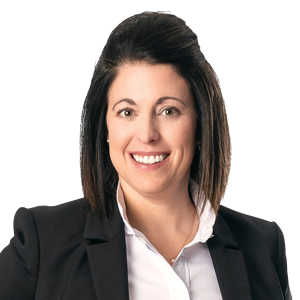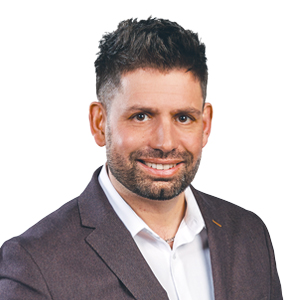One significant component of wealth management is transferring your property at the time of death.
The objective of will and estate planning is to ensure that your property transfer is as straightforward as possible and maximizes the tax benefits. In practice, among others, planning serves to determine your personal and financial objectives to:
- Protect your heirs’ financial interests;
- Minimize taxes, administrative costs and delays;
- Ensure the smooth settlement of your affairs.
A will is undeniably the best way to set out your objectives and intentions.
Reduce your estate’s tax burden
The terms and clauses in this document will determine the parameters of your plan to transfer your property by setting out how it will be distributed to your heirs. You can, therefore, ensure that the people you choose are financially protected while maintaining overall wealth management.
By judiciously using the provisions in tax legislation, you can also reduce your estate’s and heirs’ tax burden. Depending on the type of property you own (real estate, private company shares, partnership units, registered plans [RRSP, RRIF and TFSA], investment portfolio, etc.) and what your will states, you can define strategies to meet your needs while maximizing the tax considerations.
Questions to guide your estate planning
The following questions could help guide your estate planning thought process:
- Do you have a will? If so, is it up-to-date?
- Have you listed all of your assets and liabilities (current and potential)? If so, are the lists recent?
- Have you determined who should inherit what? If so, do you want to make changes?
- Do some of your heirs have special needs?
- Will your estate have sufficient cash to cover the taxes payable at the time of your death and any cash legacies you may wish to make?
A careful analysis of your financial situation and defining an estate plan that reflects your wishes will avoid conflicts and confusion in settling your estate. Our will and estate planning experts can support you in the process to ensure that your planning is compliant and to provide you with peace of mind.
02 Feb 2018 | Written by :
Éric Dufour is a management consulting expert at Raymond Chabot Grant Thornton.
See the profileYou could also like to read
Next article
Canadians who own real estate in the United States may be subject to estate tax. There are a number of factors related to such property that must be considered in order to fully understand what is involved.
Here are answers to some frequently asked questions our U.S. tax experts have received on this topic.
Q: What is the U.S. estate tax?
A: The U.S. estate tax is a tax that is payable by non-residents of the U.S. who own property in the U.S. at death. This estate tax is calculated on the fair market value of property located in the U.S. at the time of death.
Q: If at the time of my death I own real estate in Florida valued at $1,000,000, do I have to pay the U.S. estate tax?
A: For the year 2018, if the value of your worldwide estate is less than $11,200,000 (including your RRSPs), no estate tax is payable upon death. However, if the value of your worldwide estate is greater than this amount, you should consult a tax adviser from Raymond Chabot Grant Thornton.
Q: If at the time of my death, I own real estate in the U.S. but no estate tax is payable, do any U.S. tax forms still have to be filed?
A: Yes. The requirement to file form 706-NA is mandatory if, at the time of your death, you own property in the U.S. valued at over US$60,000.
Q: What is the best way to own real estate in the U.S. (condo/house)?
A: It all depends on the facts at hand, and as such, each case must be assessed individually. You should always consult your tax adviser before buying property in the U.S.
Q: Could other fees be payable at the time of my death if I own real estate in the U.S.?
A: Yes, probate fees could be payable to the State. Some planning options can make it possible to avoid probate fees.
Q: Should I prepare a mandate in case of incapacity if I own real estate in the U.S.?
A: The Canadian mandate in case of incapacity is not recognized in the U.S. You should therefore have a durable power of attorney which is recognized in the U.S.
Q: Should I amend my Canadian will if I own real estate in the U.S.?
A: In some cases it would be preferable to have a specific, English-language will for that property. Such a specific will could make it easier to transfer the property to the heirs at the time of death.
Do you have questions relating to U.S. tax issues? Our tax experts can help you.
25 Jan 2018 | Written by :
Mylène Tétreault is your expert in taxation for the Québec office. Contact her today!
See the profileNext article
There have been numerous amendments to the tax credit for the development of e-business (TCEB) since it was introduced in 2008. You may recall that this tax measure is designed to support providers of information technology (IT) services to help their clients improve their main operational processes.
The last changes were made in 2015, when the Quebec Finance Minister (QFM) announced rules to further clarify the types of IT providers covered by the program, while, at the same time, limiting access for other providers. To qualify for the TCEB, a corporation must show that its main revenues meet specific criteria.
Under the proposed changes, the QFM now disqualifies a class of income from the sale of software where the software is considered to be integrated into property (equipment of some form) intended for sale. This criterion is very broad in meaning and Investissement Québec (IQ), which is responsible for applying the program, has been providing clarifications on this new exclusion rule since early 2017.
Incidental or not?
When it reviews a TCEB claim and a company’s business model, if IQ determines that the sale of software includes property, it will ask a number of questions to understand the connection between the software and the property in question:
- Who benefits from using the software (manufacturer, value-added distributor, wholesaler, retailer)?
- How is the software used?
- Was the software used before or at the time of the sale?
- Is the result an integral or inseparable part of the property?
IQ does not use a single rule to determine if software is integrated into the property intended for sale and must now be excluded. In short, software that seems to be incidental to a property when a solution is implemented is now eliminated from the program.
This analysis is open to much interpretation and, as you can imagine, there are numerous gray areas. There are major implications if software supplied to clients that also includes property is deemed to be excluded under the new rule. The work performed by employees who develop and implement the software will no longer be eligible, which could disqualify an employee from the credit. However, the greatest impact is the company being completely excluded from the program if the proportion of income related to these activities is too high.
Explain the predominate role of the software
When IQ analyzes a TCEB claim, it bases itself on several documents. In addition to documents that explain the predominate role of the software vs. the property, factual information is always the best way to support a claim. If the core of the solution you are proposing to your clients is the software and not the equipment that is incidental to its operation, the documentation should support this fact: contracts, invoices, promotional documents, website, etc. If you are able to adjust this documentary evidence without misrepresenting your business, you’ll avoid a lot of worries when you submit a TCEB claim.
Don’t hesitate to contact our tax specialists to help shed light on these gray areas.
04 Dec 2017 | Written by :
Pascal Grob is a SR&ED expert at Raymond Chabot Grant Thornton.
See the profileNext article
Does your SR&ED project qualify for claims?
Here is a second caselaw analysis.
We published the first article in the April edition of Strangely Techie in which we analyzed an SR&ED case at the Tax Court of Canada. Here is a second one dealing with a slightly different issue: Flavor Net Inc. v. The Queen, recently settled in September 2017.
Two SR&ED projects rejected
In this case, the taxpayer contested the CRA’s rejection of two of its projects.
Project #1 consisted in the development of an energy drink containing 800 milligrams of plant sterols uniformly dispersed in a 2-oz. volume, while existing commercial products do not exceed one eighth of this concentration. The challenge lay in the fact that plant sterols are hydrophobic substances that do not mix well in a water-based solution.
Project #2 had been described in the T661 form as the development of a procedure for filling a dual-chambered bottle. However, during the hearing, this project was instead presented as the development of a partial hot-fill system in which only the active component is pasteurized and later diluted in the sterile, distilled water.
Non-eligible SR&ED project: causes for rejection
The Judge rejected the eligibility of Project #1 on the basis of five currently used criteria. In particular, he rendered his decision on the absence of technological uncertainty, because the business contented itself to use a combination of solutions and methods that are well established in the food industry: intensive mixing devices, heat, emulsifiers and dispersion ingredients. The Judge’s ruling was therefore that this was a project completed by “routine engineering”. The purpose of the project was obtained using well-known techniques, with a reasonably predictable result. The development of a new product does not necessarily require the resolution of technological uncertainty. The fact that a product does not exist on the market is not sufficient to demonstrate the presence of SR&ED.
The Judge also commented on the fact that the taxpayer had not shown that he had established the state of knowledge currently accessible at the beginning of the project. In other words, an evaluation of the technological status (search for existing patents, overview of the technical documents) must be performed before starting, and all evidence kept.
While the previous element was enough to dispose of the appeal with Project #1, the decision identified other faults, in particular, the failure to follow a scientific method, which includes the formulation of hypotheses and the realization of trials to verify these hypotheses. A hypothesis must be specific and not simply the rewording of the project’s objective as a question. “Trial and error” work is not considered respecting the scientific process; it is an approach that can be defined as a series of trials performed without following a clear, iterative logical process.
Furthermore, the Judge examined the last criteria, which was documentation, and concluded that it was very thorough. He also mentioned that while documentation was not compulsory, it assists the taxpayer in establishing that his activities do qualify as SR&ED.
As for Project #2, the Judge confirmed his rejection on the basis of confusion and inconsistency in the case. First, the project content described during the hearing and during the CRA’s review, does not correspond to what had been submitted in the T661 form. Second, the documentation did not substantiate whether the work was performed in the year in which it is being claimed. This inconsistency and absence of corroboration contributed to the project being rejected.
To be noted
In short, the lessons we can learn from this case are as follows:
- An SR&ED project should stand out from routine engineering even if the work is long and complex. Routine engineering is defined as the use of current techniques that yield a “reasonably predictable” result. However, according to previous decisions, if the result of non-trivial combinations of standard practices cannot be predicted by experts in the field, we may be in the presence of SR&ED.
- The state of technological knowledge must be well established before starting the project, and must be documented.
- SR&ED project experiments must be justified based on scientific and novel hypotheses. The reasons behind each trial are what separate systematic investigation from trial and error.
- It is important to file clear, thorough and convincing claims. In some cases, this can be difficult when you have a maximum of 1,400 words for the technical description of a project. Furthermore, information provided should be consistent with the documentation available.







